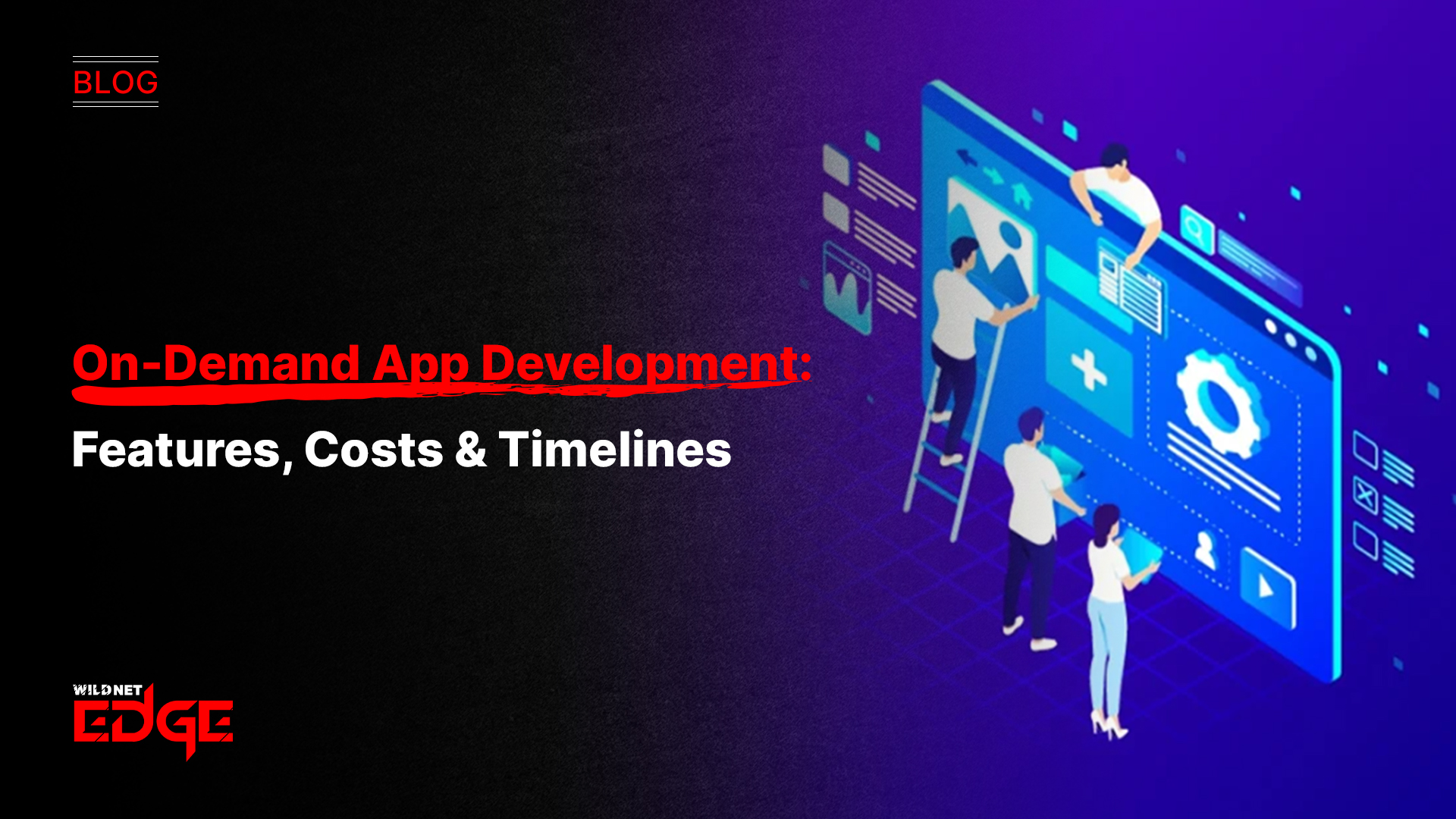TL;DR
This article explains why Flutter is an excellent framework for quickly building mobile applications. It explains that Flutter’s single codebase allows for the creation of iOS and Android apps simultaneously, significantly reducing development time and costs. This approach is key to its cross-platform speed. The guide highlights signature features like “Hot Reload,” which enables speedy Flutter prototyping and UI iteration. The article emphasizes that Flutter rapid app development is a strategic choice for startups and enterprises needing to launch high-quality, high-performance apps on a compressed timeline without compromising the user experience.
In today’s competitive digital market, speed is a critical advantage. Businesses, especially startups, need to get their ideas in front of users as fast as possible. However, the high cost and slow pace of traditional mobile development can be a major roadblock. This is where flutter rapid app development emerges as a strategic solution, offering a way to build beautiful, high-performance applications for both iOS and Android from a single codebase, drastically cutting down on time and cost.
What is Flutter?
Flutter is an open-source UI toolkit created by Google. It allows developers to build natively compiled mobile, web, and desktop applications from one codebase using the Dart programming language. Unlike older hybrid frameworks that often relied on web views, Flutter applications compile directly to native ARM or Intel machine code. It uses its own high-performance rendering engine to draw every pixel on the screen, giving developers complete control over the UI and ensuring a smooth, responsive, 60fps or higher performance that feels truly native.
Benefits of Flutter for Rapid App Development
Flutter’s primary advantage is its ability to accelerate the entire development process from conception to launch. This speed makes it the preferred choice for many modern development teams.
The “Hot Reload” Feature: The Engine of Speed
The standout feature of Flutter and the cornerstone of its reputation for speed is “Hot Reload.” This allows developers to see the changes they make to the code reflected in the app in real time, often in under a second, without having to restart the application.
This capability transforms the development process. A developer can fix a bug, tweak a UI element, or experiment with a new layout and instantly see the result. This creates an incredibly tight feedback loop, making Flutter rapid app development not just a claim but a reality. This feature is compelling for Flutter prototyping, as designers and developers can sit together and iterate on a design live, perfecting the user experience in a fraction of the time it would typically take.
One Codebase, Two Platforms (iOS & Android)
This is the most significant financial benefit. Traditionally, to reach all users, you had to build two separate native apps: Swift for iOS and Kotlin for Android. This meant two teams, two codebases, and double the testing and maintenance. Flutter eliminates this duplication.
A single team of Flutter developers can write one set of code that works flawlessly on both platforms. This dramatically reduces the total number of development hours, complexity, and cost. This single-codebase model is the definition of cross-platform speed and makes flutter rapid app development a highly budget-friendly choice for businesses of all sizes.
This approach is the core offering of any specialized Cross Platform App Development Company.
Beautiful, Consistent, and High-Performance UI
Flutter uses its own rendering engine, which means it doesn’t rely on the native UI components of iOS or Android. This gives it two major advantages. First, it ensures a consistent brand experience; your app will look and feel exactly the same on all devices and operating systems, which is crucial for branding. Second, it allows for the creation of beautiful, complex, and high-fidelity user interfaces with smooth animations that are not easily achievable with other frameworks. This UI control does not come at the cost of performance, which remains high and responsive.
Reduced Testing and Maintenance Time
A single codebase means less room for error. Business logic is written once, so a bug fixed in one place is fixed for both platforms. The Quality Assurance team must only validate one logic set, though they still test for platform-specific UI interactions. This reduction in the testing matrix further contributes to the speed of Flutter rapid app development. In the long term, maintenance is also simplified, as you only have one codebase to update when launching new features or supporting new OS versions.
Flutter vs. Native Development: A Speed Comparison
When the primary goal is rapid market entry, the choice of framework has clear implications. This is where Flutter rapid app development truly shines as a strategic choice.
| Factor | Flutter (Cross-Platform) | Native (iOS + Android) |
| Development Time | Significantly Faster | Much Slower |
| Time-to-Market (MVP) | Very Fast | Slow (Often 2x) |
| Team Size Needed | Smaller (One Team) | Larger (Two Teams) |
| UI Iteration Speed | Instant (Hot Reload) | Slow (Recompile) |
| Codebase | Single | Two Separate |
Choosing a full-service Mobile App Development Company often involves a strategic discussion about these tradeoffs.
Use Cases for Flutter Prototyping and MVPs
The speed of Flutter rapid app development is a significant factor, making it possible for startups and innovation-focused enterprises to top the list among other technologies.
The process of Flutter prototyping has no competitors. A Flutter prototype represents an actual app (not merely a clickable mockup created by a design tool), hence founders can create high-fidelity, functional prototypes that can be shown to investors or tested with actual users. This gives much more critical feedback and affirms the concept’s technical viability.
For a Minimum Viable Product (MVP), Flutter’s cross-platform speed enables a startup to go live on both iOS and Android worldwide at once, thereby gaining the widest market for validation without having to double their initial development budget.
Case Studies: Flutter Rapid App Development in Action
Real-world scenarios highlight the benefits of Flutter rapid app development.
Case Study 1: eCommerce Startup’s MVP Success in Just 3.5 Months
- The Challenge: An eCommerce startup needed to launch a feature-rich mobile app on both iOS and Android before the critical holiday shopping season. They had a tight 4-month deadline and a limited budget.
- Our Solution: We chose a flutter rapid app development approach. The Hot Reload feature was instrumental, allowing our developers to iterate on the product page UI and checkout flow in real-time with the founder’s feedback.
- The Result: The app was successfully launched on both platforms in 3.5 months, on budget. Its high performance and smooth, custom UI were praised by early users, leading to a successful first quarter.
Case Study 2: Logistics Enterprise Workforce Unification with Flutter App
- The Challenge: A large logistics corporation needed a new internal app for its warehouse staff and delivery drivers. The workforce used a mix of corporate-issued iPhones and rugged Android scanners.
- Our Solution: The company opted for Flutter to ensure a consistent UI and logic across all devices, a key factor in reducing training time. The single codebase simplified integration with their legacy backend systems.
- The Result: A single, small team delivered both apps, saving the company significant costs compared to their initial native development estimates. The cross-platform speed of deployment was a major factor in the project’s success.
Our Technology Stack for Flutter Development
As a premier Flutter App Development Company, we use a modern, robust stack to build our applications.
- Language: Dart
- Core Framework: Flutter
- State Management: BLoC, Provider, Riverpod
- IDE: Android Studio, VS Code
- CI/CD: Codemagic, Bitrise, Jenkins
- Backend: Firebase, Supabase, Custom APIs (Node.js, Python, etc.)
Conclusion
Flutter rapid app development provides a powerful solution to the primary challenge of modern mobile development: how to build high-quality, beautiful apps for all users without incurring massive costs and long delays. It delivers an unmatched combination of speed, performance, and UI control.
Ready to see how flutter rapid app development can transform your idea into a market-ready product? At Wildnet Edge, our AI-first approach means we build intelligent, data-driven applications. We leverage the speed of Flutter to create sophisticated Flutter prototyping and full-scale apps, helping you launch faster and smarter.
FAQs
It allows developers to inject new code directly into the running app, updating the UI in less than a second. This means they don’t have to recompile the entire application (which can take minutes) every time they make a small change, dramatically speeding up the UI design, iteration, and bug-fixing process.
Yes. Because Flutter compiles directly to ARM/Intel machine code and uses its own advanced rendering engine to draw the UI, it delivers performance that is, for the vast majority of business applications, indistinguishable from native. It’s fast, smooth, and highly responsive.
While the talent pool for Dart/Flutter is newer than for JavaScript/React Native, it is one of the fastest-growing developer communities in the world. Backed by Google, it has a massive, active community, and finding skilled Flutter developers is becoming progressively easier.
Yes. Flutter has a robust and easy-to-use system called “platform channels” that allows the Dart code to call native APIs in Swift/Kotlin/Java. This gives you full access to any native device feature, including the camera, GPS, Bluetooth, and device-specific sensors.
When you need to add a new feature or fix a bug in the business logic, you only have to write and test the code once. You then deploy a new version to both app stores. With native development, you would have to do this work twice, coordinate two teams, and test two separate codebases, significantly increasing long-term costs.
It is arguably the best choice. Because Flutter prototyping results in a real, functional app (not just clickable mockups), you can test the user experience with real users or investors, including animations and gestures. This prototype’s code then becomes the foundation for your full product.
The main cost advantage is efficiency. You are essentially getting two native-quality apps (iOS and Android) for the cost and time of building one. This reduction in developer-hours and a faster time-to-market is the primary driver of its cost-effectiveness.

Nitin Agarwal is a veteran in custom software development. He is fascinated by how software can turn ideas into real-world solutions. With extensive experience designing scalable and efficient systems, he focuses on creating software that delivers tangible results. Nitin enjoys exploring emerging technologies, taking on challenging projects, and mentoring teams to bring ideas to life. He believes that good software is not just about code; it’s about understanding problems and creating value for users. For him, great software combines thoughtful design, clever engineering, and a clear understanding of the problems it’s meant to solve.
 sales@wildnetedge.com
sales@wildnetedge.com +1 (212) 901 8616
+1 (212) 901 8616 +1 (437) 225-7733
+1 (437) 225-7733































